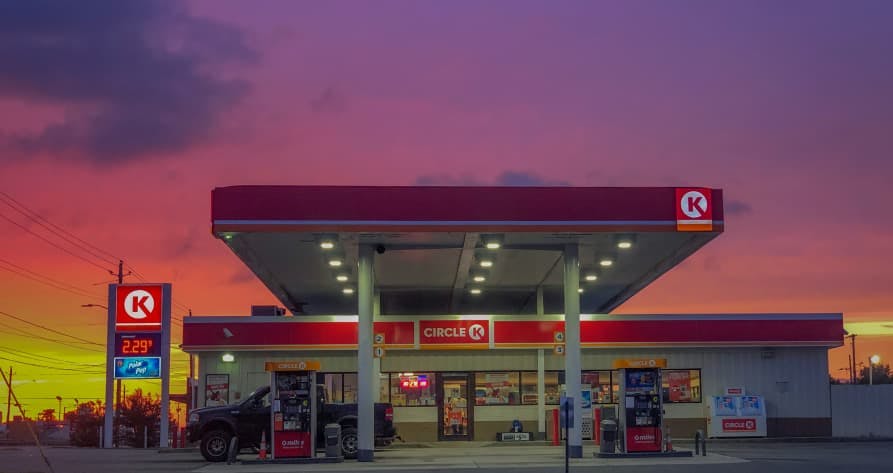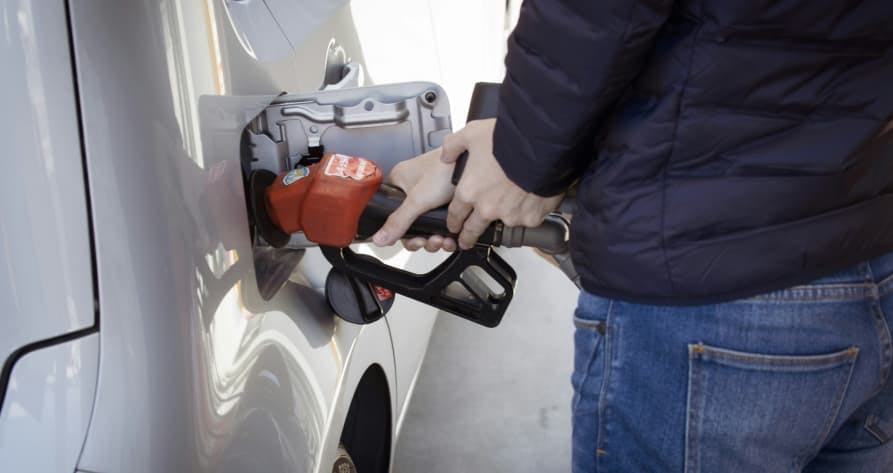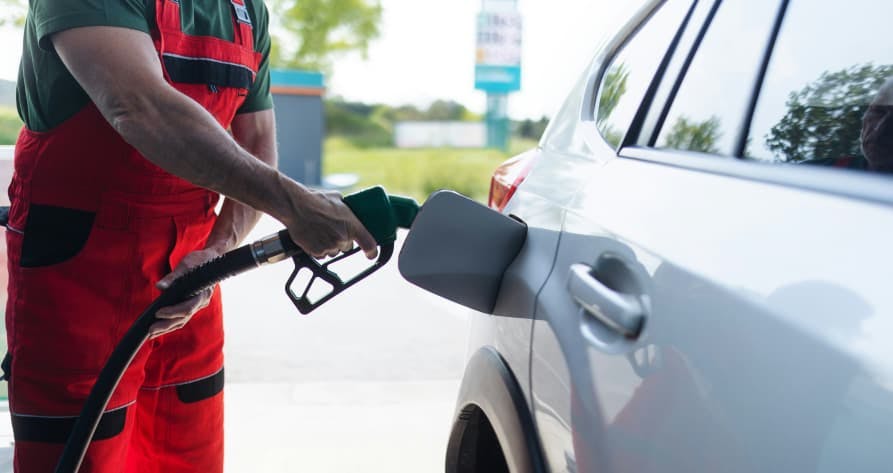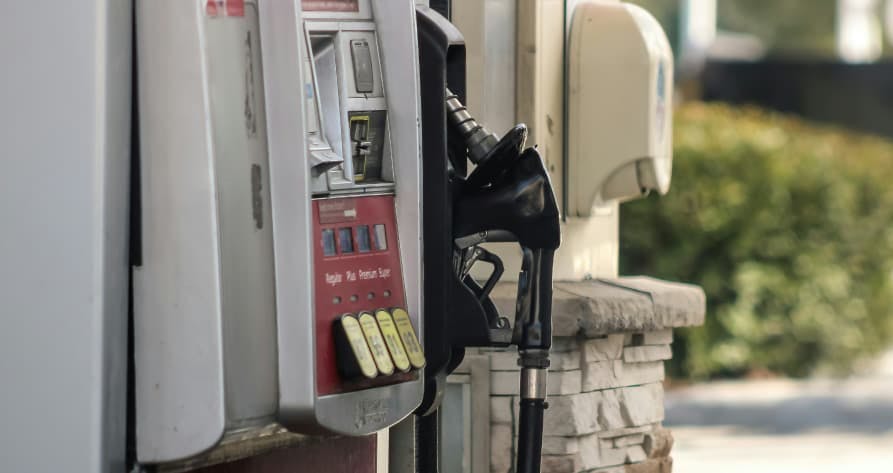ESG / CSR
Industries
How Does A Gas Station Affect the Environment?



Everyday American life or any road trip means you’ve come across a gas station or two in your life, but how does a gas station negatively impact our planet?
A gas station in the U.S. refers to a place, either to the side of the road or in a congested area, where drivers can stop to fuel up their cars and also walk into a convenience store for snacks, coffee, toiletries, and to use the restroom.
However, despite their handiness, a gas station may not be the most beneficial thing for the planet.
In this article, we’ll explain all the reasons why a gas station isn’t eco-friendly, the repercussions of a gas station, and alternatives to needing to stop at the gas station.
What is a gas station?
A gas station, sometimes referred to as a petrol station in regions such as the United Kingdom, is a place that will sell gasoline (petrol), diesel fuel, and other fuels in a commercial sense. In addition to selling various fuels, a gas station will often offer other convenient services for those on the road.
Typical features at a gas station normally include:
- Fuel Dispensers – The primary reason why someone will stop at a gas station is to refuel their car – which is where customers can choose their type of gasoline: from premium, diesel, and even alternatives such as ethanol.
- Fuel Storage Tanks – Gas stations need to store all of the fuel to be sold to customers – and this is usually gone with underground storage tanks, where the EPA has regulations to ensure that fuel is stored safely.
- Convenience Shops – From small fast food chains, coffee shops, to a small store with snacks, gum, slushies, phone chargers, or other small items – most gas stations have a convenience store for customers to stock up on various items while on the road.
- Restrooms – Bigger gas stations will have an all-inclusive rest-area for customers as well.
- Car Wash – Higher-end gas stations will offer services to get your car washed while you refuel.
- Banking Services – While it’s not as likely to be needed anymore thanks to contactless payments, a gas station will often have an ATM of some kind of people to withdraw cash.
👉 Even in 2024, gas stations remain important for truck drivers and other long-distance travelers as access points to replenish fuel for their vehicles and also as a rest stop for themselves.

Why is a gas station bad for the environment?
Gas stations are bad for the environment, seeing as gasoline creates excess greenhouse gas emissions and other environmental impacts as a result of fuel extraction, transportation, and storage until driver’s fill up their cars.
Here are a few reasons why gas stations aren’t good for the environment:
- Air Pollution – When cars use gasoline and diesel fuels, it contributes to harmful pollutants like carbon monoxide and other volatile organic compounds (VOCs) – both of which create smog, aggravate people with respiratory issues, and spur climate change itself.
- Greenhouse Gas Emissions – Transportation was responsible for 29% of GHG emissions in the U.S. in 2021, with this number presumably remaining the same or even having increased following the pandemic. Gas stations perpetuate this ongoing issue of excess emissions from via our transportation sector.
- Water Pollution – Excess gasoline that drips out of a gas pump can end up in rainwater and ultimately storm drains, which could transfer oil and other volatile substances to nearby bodies of water – putting marine life in harm's way.
- Destruction of Viable Land – An area of land that could prove viable for farming could be destroyed and used to build gas stations and other off-of-the-highway amenities such as shopping malls, restaurants, and hotels. This can hinder biodiversity and therefore continue to negatively impact climate change.
- Potential Waste – Gas stations present the opportunity for people to buy snacks, drinks, and other items that they may not need. As a result, the slushie or single-use plastic bag of potato chips from the gas station will probably end up in a trash can out of convenience while on a road trip – and contribute to even more greenhouse gas emissions.
👉 Overall, a gas station raises a lot of environmental concerns – many of which will require stricter regulations and efforts on behalf of customers and the gas station themselves to change.

What regulatory efforts have been made to mitigate and manage the environmental impact of gas stations?
Luckily, the environmental impact of a gas station has not gone unnoticed – with several regulatory measures being implemented to help manage the negative effects of gas stations: such efforts on behalf of the EPA and various state and local regulations.
Here are some of the current regulations to help keep the environmental impact of a gas station in check:
- Federal Regulations Under the Environmental Protection Agency (EPA) – Under the Clean Air Act, it’s required for the EPA to monitor the fuels and additives in a motor vehicle in order to keep both water pollution and air pollution at bay. Various regulations such as gas sulfur regulations, MSAT to help reduce mobile source pollution, and RVP regulations to manage the vapor pressure of gasoline sold at a commercial gas station for the sake of protecting the ozone-layer are all directed by the EPA.
- State Regulations – Each state in the U.S. has the freedom to regulate how fuel from a local gas station is taxed, stored, and how the price is regulated. In addition to this, each state may develop their own consumer protection laws and efforts to push for more renewable fuel standards.
💡Did you know that some states don’t allow people to pump their own gas and refill their cars by themselves? Some states that require a gas station attendant to refuel your car for you include New Jersey and previously Oregon.

What can a gas station do to reduce their environmental impact today, and in the future?
In addition to these governmental protocols to evade the impact of a gas station, there are a few other things that you should encourage your local gas station to do in order to promote the importance of environmental reform – such as checking for leaks and looking to implement eco-friendly technologies.
Here are some ways that gas stations can do their part to reduce their environmental impact on their own behalf:
- Preventative Measures – It’s crucial to have leak detection and other prevention measures in place to avoid potential gas spills in the first place.
- Thorough Cleanup Procedures – Having a plan in place for an accidental spill is paramount to help avoid the worst environmental effects.
- Install Eco-friendly Technologies – Seeking to implement technologies such as solar panels, green infrastructure, electric vehicle charging stations, and even vapor recovery systems could all help to reduce the environmental impact of a gas station.
In addition to the precautions that a gas station could take today, there are exciting advancements to come on the future to help gas stations reduce their environmental impact – such as further advancements in clean energy, more EV charging stations as some places begin to ban the purchase of gasoline powered vehicles, and even hydrogen fueling stations. These would help lower the chances of a gasoline leak and the odds of a combustion.
Two examples of gas stations which have made a genuine effort to go green include BP and Shell, which are some of the most popular gas stations in the U.S. – seeing as both Shell and BP have made an effort to invest in renewable energy and low-carbon technologies and install electric vehicle charging stations.
👉 Ultimately, it’s important for a gas station to create their own environmental goals in combination with adhering to the current federal and state regulations.

What are some alternatives to needing to stop at the gas station?
It’s important for both government action and individual efforts to be put into motion for gas stations to reduce their environmental impact, but also – as the consumers, we should also find ways to avoid a trip to the gas station whenever possible to help reduce consumption and the potential negative impacts.
Here are a few ways to never have to stop at the gas station gain:
- Switch to an EV – One surefire way to avoid needing to go to the gas station at all is to make the switch to an electric vehicle, which is estimated to produce around half the amount of greenhouse gas emissions over the course of its life cycle.
- Use Public Transportation – We understand that on long road trips this isn’t possible, but if your daily commute is over 2 hours long and requires a stop at the gas station every now and then – all of those trips can add up and be avoided if public transport is used instead.
- Pack Your Own Snacks – Oftentimes whilst on a long road trip, we stop at the gas station not because we need to refill our cars – but to grab snacks. A great solution to this is to go shopping prior to your road trip or pack your own sustainable meals with reusable tupperware and utensils to match. This can help you avoid the quintessential American dashboard covered with McDonald’s wrappers and empty soda cans to later be thrown away.
- Stop at a Rest Area – The bathroom at a gas station isn’t likely to be well maintained or up-to-date, but the good news is that most major highways have built rest areas – which are more likely to have implement energy efficient technologies such as hand dryers and electric soap dispensers to help prevent waste.
Overall, every trip to the gas station is bound to create a carbon footprint of some kind – but the good news is that the government, ordinary people, and gas stations themselves have the power to make the necessary changes to avoid the worst of the environmental effects of a gas station.
What About Greenly?
If reading this article about the environmental impact of a gas station has made you interested in reducing your carbon emissions to further fight against climate change – Greenly can help you!
It can be challenging to determine when it’s best for your company to use services such as a local gas station or not, but don’t worry – Greenly is here to help. Click here to schedule a demo to see how Greenly can help you find ways to effectively implement and utilize green finance.
Greenly can help you make an environmental change for the better, starting with a carbon footprint assessment to know how much carbon emissions your company produces.



